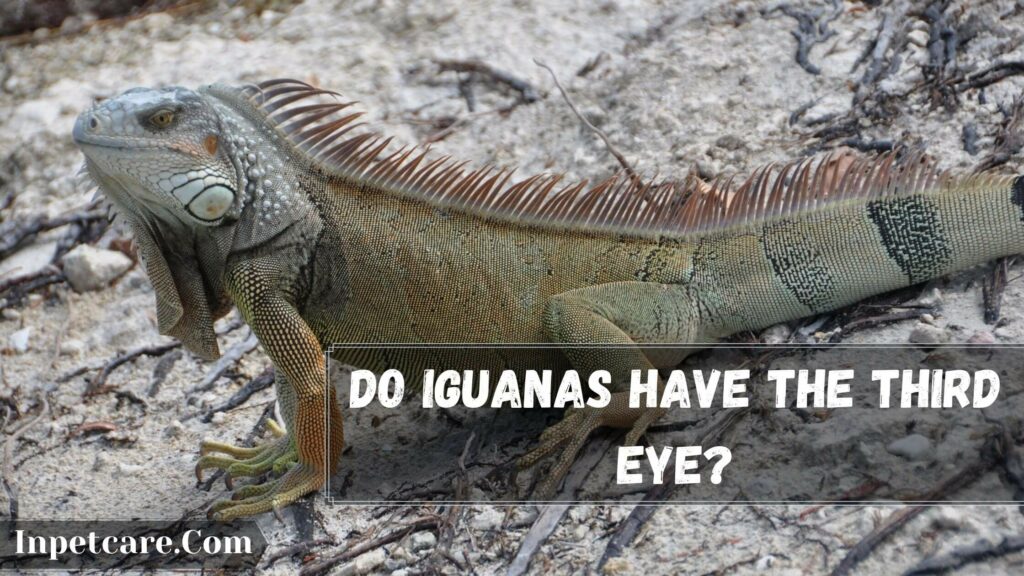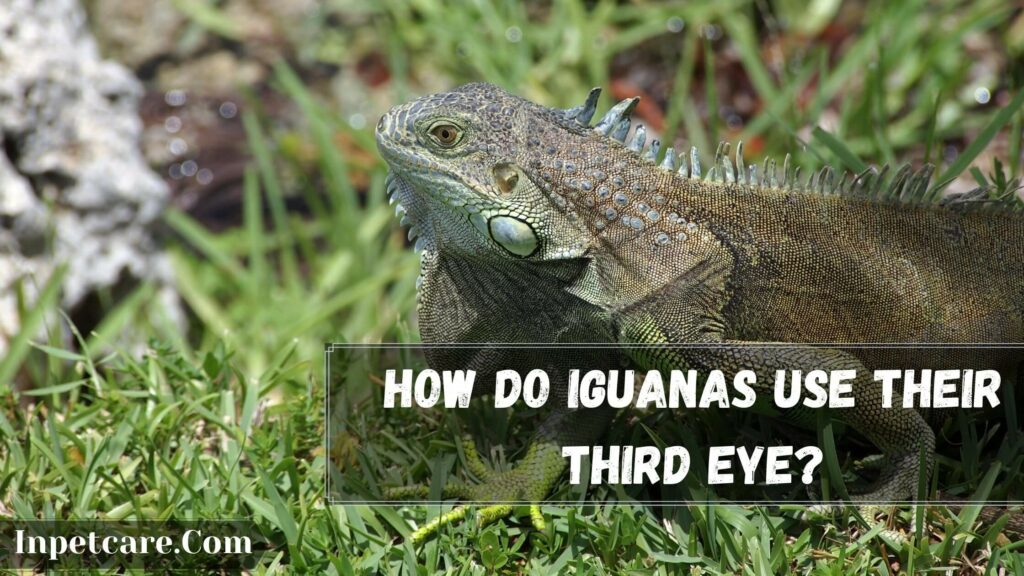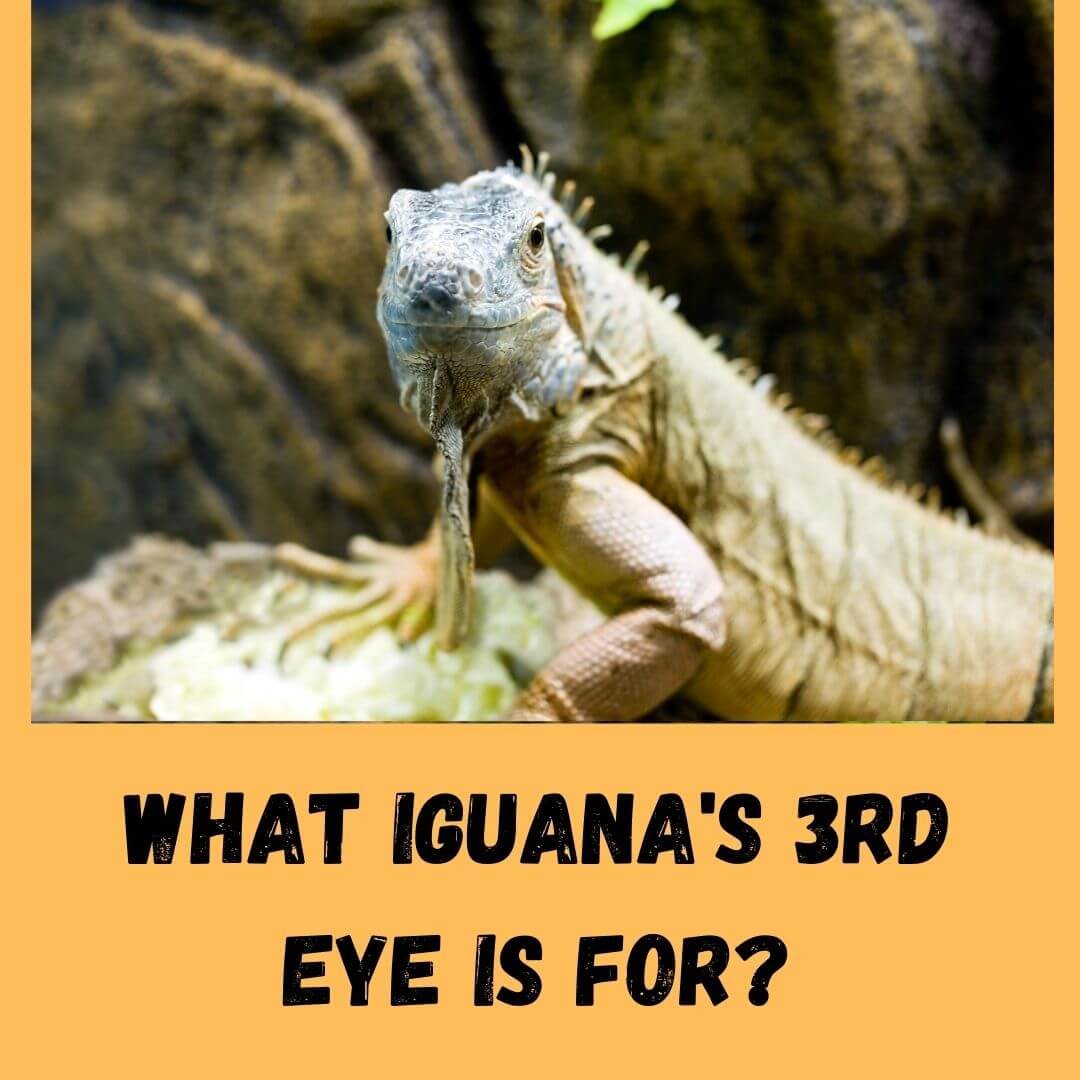If you already have an Iguana, it can surprise you if I tell you that Iguanas have three eyes. You probably would have no idea that these lizards have an extra look that doesn’t function like the other two eyes. The third eye is essential for their survival as it provides critical information in the wild.
In this article, we are going to find out everything about Iguanas. We will learn do Iguanas have three eyes and what it is for, and what you should do to care for your Iguana’s third eye. So read on, and let’s get started knowing if Iguanas have 3 Eyes.
Do Iguanas Have 3 Eyes?

Yes, Iguanas have three eyes. The third eye doesn’t work or look like the other two eyes but is very significant for survival. This third eye seems pretty different from the other two and can quickly get unobserved. You may not even realize that it exists in your pet.
You can say that the third eye of your Iguanas is literal and is also known as the solar eye or parallel eye. The third eye is usually situated at the top of the Iguana’s head between the two traditional Eyes.
Like the regular two eyes of your Iguanas, the third eye also carries a lens and retina but lacks iris making them look different from the other two. The third eye is also covered with scales over it and is smaller when compared to the other two.
And another thing that makes the third eye more important and fascinating is that it connects directly to your pet’s brain. Therefore, this third eye sends vital signals directly to the brain and pineal gland instead of the optic center, where the other two eyes are meant to send their alerts.
That 3rd eye functions utterly different from the other two, situated at the top of your Iguana’s head. Let’s talk about what the third eye is and why it is essential.
What Does the Third Eye Detect?
The primary function of the third eye is to detect the temperature, Light, and shade difference. Therefore, Iguanas are capable of knowing when the seasons are changing. However, this third eye is not evolved to send exact images like the other two eyes.
Do Any Other Animals Have This Third Eye?
Yes, a few species of reptiles and lizards have a third eye. Reptiles like monitor lizards, skinks, and iguanas have a third eye. It is primarily used to detect seasonal changes outside, or the predators are looking to prey from above or behind.
How Do Iguanas Use Their Third Eye?

After knowing what that 3rd eye of your Iguanas is, let’s know its primary function and how ants use their third eye. As we learn that the third eye sends signal information to a different area of their brain and function entirely differently from the other two eyes, knowing how iguanas use this, I will help you care for it properly.
Even though the third eye is completely different from the other two, it serves a critical role in your Iguanas and survival. As the third eye is not used for seeing the items, here is what it is used for.
Helps Them Sense Predators and Items From Above
Surprisingly, the third eye can easily detect shadows and changes in temperature, which allows the Iguanas to see Predator from behind and above. Even though the third eye will not help the Iguana see directly, it indirectly helps them learn about their surroundings.
Whether it’s a predatory bird or cloud above them, Iguanas are likely to run and hide, which allows them to escape predators if their two traditional eyes cannot detect such threats.
Regulates Their Biological Processes
The different chemicals and hormones present in your Iguana’s body will determine how your pet will live. As Iguanas live based on their biological processes, the third eye controls most of these. The third eye helps your Iguanas learn when to wake up and sleep.
Adding to this, the third eye sends signals to the pineal gland, which it is possible to release melatonin hormone that helps regulate this sleep cycle. The third eye sends signals directly to the pineal gland that it’s time to sleep and release melatonin.
Other than the melatonin hormone, other hormone productions and thermal regulation are deeply connected to the third eye and the pineal gland in reptiles like iguanas.
Interesting Further Reading
- Are Bearded Dragons And Iguanas The Same?
- 7 Safe Plants For Iguana Enclosure
- 9 Best Type Of Iguana For A Pet
Acts As a Compass
In the wild, the third eye also acts as a compass. Iguanas using that third eye find their home once they are done foraging food for the day. Plus, researchers have found that the Iguana with a third eye covered often faces difficulties locating their homes.
Many types of research and analysis suggest that the third eye of Iguanas acts as an internal GPS in their body. Perhaps this is because the third eye can detect light, which helps the Iguanas know which general direction it is moving or coming from.
How To Take Care of Your Iguana’s Third Eye?
Because the third eye of your Iguanas is extremely important for survival, it should be taken care of properly. Even an Iguanas is in captivity, caring for their third eye is essential to keep their sleep cycle, and thermal regulation stable as both are deeply linked to the third eye and the pineal gland.
Use Automatic Lighting
If you don’t have enough time or tend to be very busy at night to turn off the light, then use automatic lighting. It might be costly and upfront, but it will be worth it. By having automated automatic lighting, you will never have to worry about remembering to turn off the lights at night and mess with your pet’s tank every day and night.
Turn Off Light at Night
In The Wild, Iguanas usually forage for food during the natural day and sleep at night. Therefore, it is essential to mimic the same environment for their well-being in captivity. Turning off the light at night will help the Iguana’s third eye detect Light and release hormones at the right time to regulate the sleep cycle.
If you keep the lights on, the third eye will eventually negatively impact the pineal gland’s thermal regulation process and hormone production. Most experts recommend replicating the day and night cycle within your Iguanas tank for your well-being and health.
During the daytime, plenty of bright light and UVB exposure should be provided, and all should be turned off whenever it is nighttime.
Never Approach Your Iguana from The Back & Above
One of the essential things that all responsible owners must know is never approach your dear pet from the above. No matter how strong the bond is between you two, it would help if you never came to your Iguanas from above.
Coming from behind or above will create a shadow over the third eye of your Iguanas, making them startled. It is common for Iguanas to feel startled or threatened as they associate shadows with predators. Instead of approaching from above, try to close your pet from the front where they can easily see you. This is the best way to let your Iguanas know that you are coming them and not up but not as a Predator but as a caretaker.
Don’t Alternate Between Natural and Artificial Light.
You should never alternate between natural Light and Artificial Light by thinking that your Iguanas need a bit of fresh air. It might sound relatively healthy in theory, but it will never work. Alternating between natural and artificial Light will negatively impact their health.
Some Iguanas also react negatively in such circumstances. It is still unclear why Iguanas behave negatively, but it might be something to do with the third eye. If you want your Iguanas to be healthy and happy all life long, consider keeping them on artificial Light in captivity. Never alternate between the two for their well-being.
Final Thoughts
Knowing that Iguanas have a third eye located at the top of their head might sound weird to many people. You have all the ideas on the third eye of Iguanas and how it works. Knowing that the third eye is different from the other two serves an essential function in their survival.
So, it would help if you took care of them properly. To create a suitable environment that doesn’t irritate the third eye. The correct Light cycle and the right approach will do the work. It is essential to work with your pet’s third eye and not against it by doing these two things.
I have tried my best to give you all the information on do Iguanas have third eyes. If you find this post helpful, then consider sharing it with others. Your one share can make many people aware of Iguana’s third eye function and why it is essential to take care of it properly. All people should learn to nourish the third eye if they keep Iguanas in captivity.

94% of pet owners say their animal pal makes them smile more than once a day. In 2007, I realized that I was made for saving Animals. My father is a Vet, and I think every pet deserves one. I started this blog, “InPetCare”, in 2019 with my father to enlighten a wider audience.

